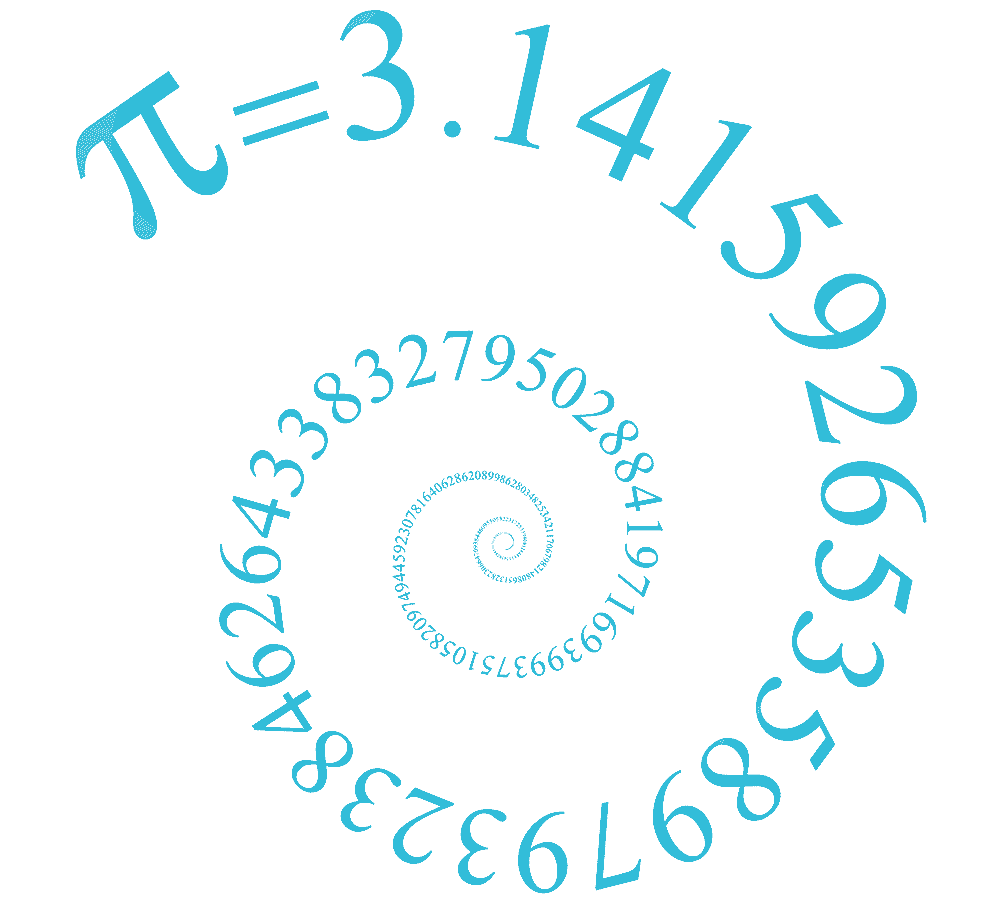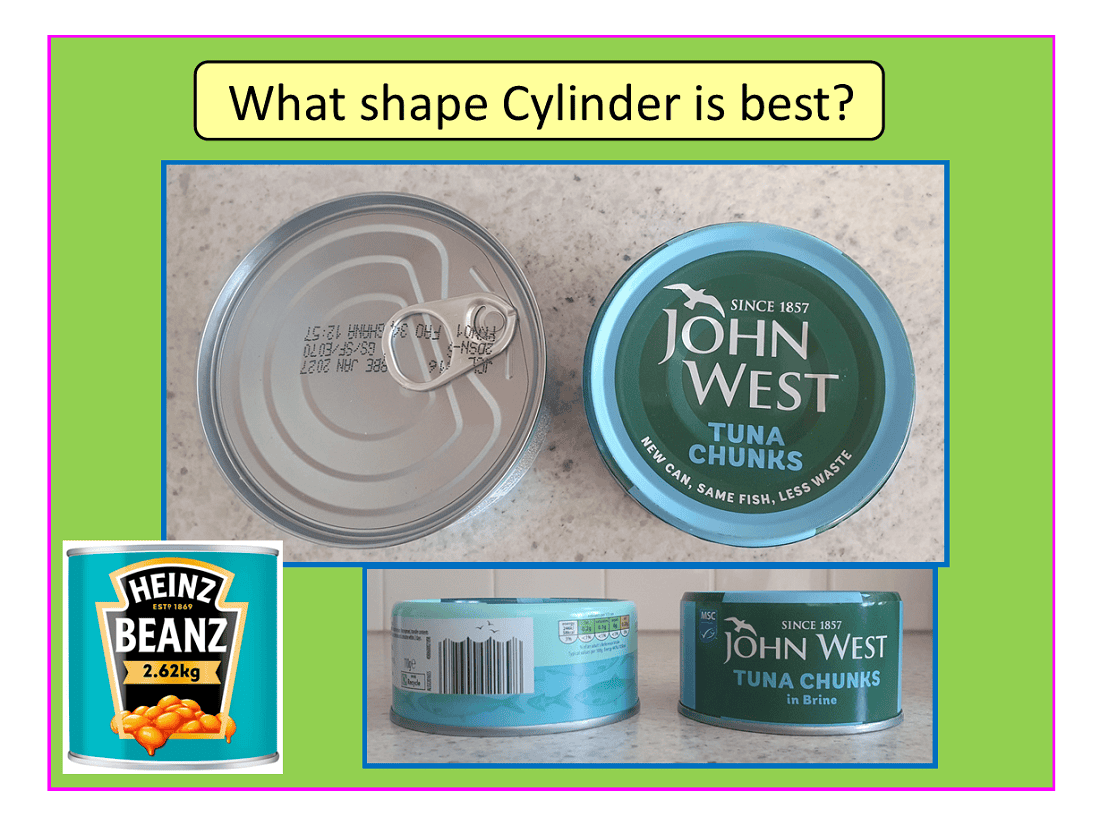THE TIN OF TUNA ON THE LEFT: is the traditional shape: quite wide and not very tall. I was intrigued to see recently (2024) that one producer of tuna (can on the right!) has recently changed the shape, making it a bit taller and narrower, with the claim “NEW CAN, SAME FISH, LESS WASTE”. What is going on here?
AT GCSE: we learn how to measure the total surface area of a cylinder of radius r and height h:
$A=2\pi r^2 + 2\pi rh$
The two lots of $πr^2$ are the areas of the circles comprising the top and bottom of the can, and then $2πrh$ is the area of sheet metal required for the “wrap”. Think of it as a rectangle of height h and length 2πr (this will become the circumference of the can when we curl it round to form the curved sides of the can).
Clearly it is advantageous to contain a given volume of fish using as little sheet metal as possible. Therefore (drum roll please!):
AT A-LEVEL: we use the differential calculus to find the shape of cylinder which minimises the area of sheet metal required! This is one of the coolest parts of the A-level syllabus, because it is a) very simple, b) very useful, and c) is completely impossible to do using GCSE methods. The method in brief is included at the end of this post.
AND THE ANSWER?: after we find an expression for the surface area in terms of just the radius, differentiate it, set it equal to zero and solve: it turns out that the manufacturers of metal cans would do well to ensure that their cans are as high as they are wide – so that they look like a square when viewed from the side. This means that the mathematicians at John West have indeed made an improvement: their new design of can does indeed contain the same volume of fish but using less sheet metal.
SO WHY ARE CYLINDERS OF FOOD NOT ALL “SQUARE”?: this is a great question! The “flat and wide” cans that tuna and pineapple rings typically come in are indeed using more sheet metal than they need to contain a given volume. In the case of the pineapple, they kind of need to be that wide to accommodate the width of the rings! But tuna cans should really be taller and narrower – ideally square shaped when viewed from the side.
WHAT ABOUT CANS OF BEANS AND SOUP? This standard food can shape is a little taller and narrower than the ideal “square from the side” shape that minimises the amount of sheet metal required to contain their contents. The reason for this? My guess is that the standard shape makes them really easy to grab in your hand, whereas the optimum “square from the side” shape would make our tins a little too wide to be held comfortably in the hand.
THE LAST WORD: In the case of the enormous tins of beans used by serious caterers, such as the 2.62kg tin of beans pictured: retailers like Heinz have indeed chosen the “correct” square-from-the-side shape that uses sheet-metal most efficiently – demonstrating that in big business it pays to do the maths properly!
THE METHOD IN BRIEF FOR CALCULUS JUNKIES:
Volume of pictured tin = $πr^2h$ = π x 3.75² x 4 = 177cm³
So for any cylinder of that volume we require $\pi r^2h = 177$
Rearranging to make h the subject:
$h = \frac{177}{\pi r^2}$ (1)
Now then:
Surface area = $2\pi r^2 + 2\pi rh$
= $2\pi r^2 + 2\pi r \frac{177}{\pi r^2}$ (after substituting in the expression (1) above)
= $2\pi r^2 + 353r^{-1}$
Differentiate this, set it equal to zero and solve to find that the optimal shape (to minimise the sheet metal required) is achieved when r=3.04…, so Diameter D = 6.09. Sub this back into expression (1) to find that h=6.09 as well, meaning that the optimal shape of cylinder should have equal width and height. To do this properly and exactly, use a volume of V instead of 177.

